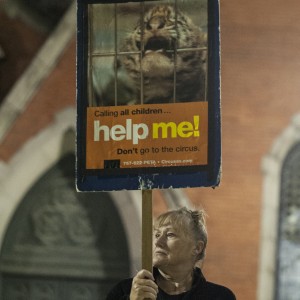By Mallory Hopkins | gargoyle@flagler.edu

“What mood are the bees in today?” This is what Marilyn Young, a Jacksonville beekeeper and owner of Lark Bee Company, asks herself often when she checks on her hives.
During the week, she is a lawyer and practices with her husband, Mark. On weekends she is a beekeeper and teaches beekeeping classes, excited about the increase in private beekeepers in the past few years.
Young became involved with beekeeping six years ago.
“I wanted to do more with growing my own fruit and vegetables at home,” Young said. “Then also a little bit of helping the environment in the process.”
Young said she had begun gardening but was having trouble with it: she was told that the failure of her garden had to do with the lack of bees. She went to an event discussing backyard beekeeping, which is where it all started. She has now been teaching beekeeping classes for three years.

“You wouldn’t have any fruits and vegetables that currently are available to us without commercial beekeepers, so they’re really essential to us on a grand scale,” said Young.
Commercial and backyard beekeeping are very different animals. While commercial beekeeping is essential for agriculture, backyard beekeeping is becoming increasingly important for environmental reasons and to benefit the general bee population.
Young was one of the first backyard beekeepers in her residential area. She knew there weren’t many bees around because she had a hard time with her queens successfully mating: they are much more successful when they can mate with male bees from outside hives.
“When I first started beekeeping, I could not get a successful mating process for my queens, because I knew there were no other beehives around, but then, two, three years down the road I knew other beekeepers were coming in because my queens were mating really, really well,” Young said.

This type of beekeeping could be key to helping regenerate the bee population.
“I think as you have backyard beekeepers moving into these little pockets of neighborhoods, increasing the food sources, you’re going to have more bees,” she said.
Backyard beekeeping is also helping the biodiversity of bees in the area since their population has begun to increase.
“I used to have no bees, then the honey bees came in and they started helping with pollination and then I started seeing more bumblebees, more leaf cutter bees, more sweat bees, more wasps. They all started coming in because it became a more pollinator friendly environment.”
Having an increased population of pollinators in an area increases the flowering in that area and also helps with small-scale gardens.

The rusty-patched bumblebee is currently the only bee on the endangered species list. Other bees are threatened, but not endangered.
If Young is seeing this much of a difference with a few more hives, it could save other species of bees from finding their way onto that list.
“(The natural population of bees) has definitely built up in areas that you would not have had bees if it wasn’t for the backyard beekeeper,” Young said.





Be the first to comment on "The backyard difference: How small-scale beekeeping could save the population"